
 |
Eager Space | Videos by Alpha | Videos by Date | All Video Text | Support | Community | About |
|---|

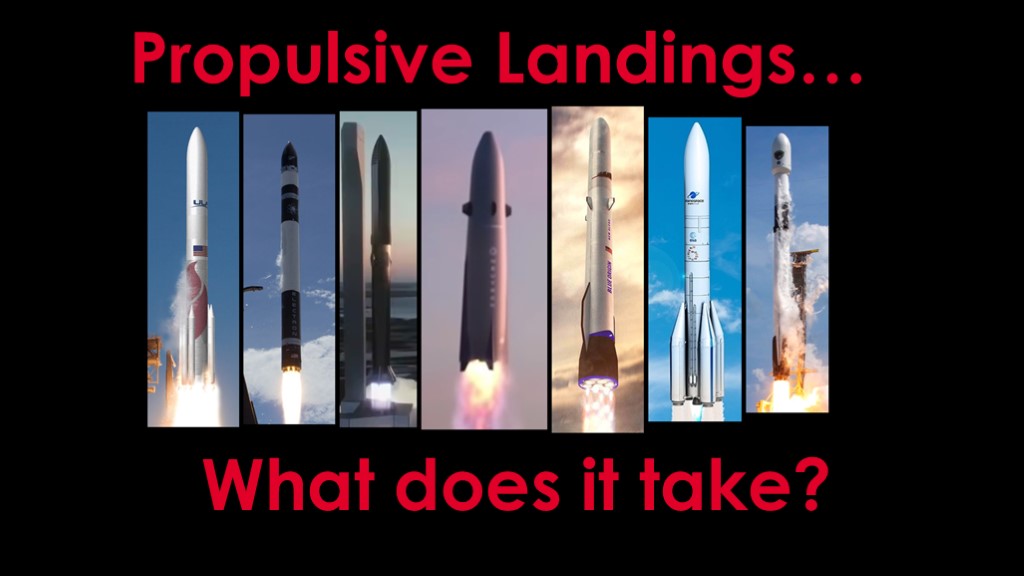
I was answering this question on Reddit for probably the tenth time a few days ago, and I remembered that I was planning on doing a video the topic, so here it is.
Why are some rockets able to do propulsive landings of the first stage while others are not?
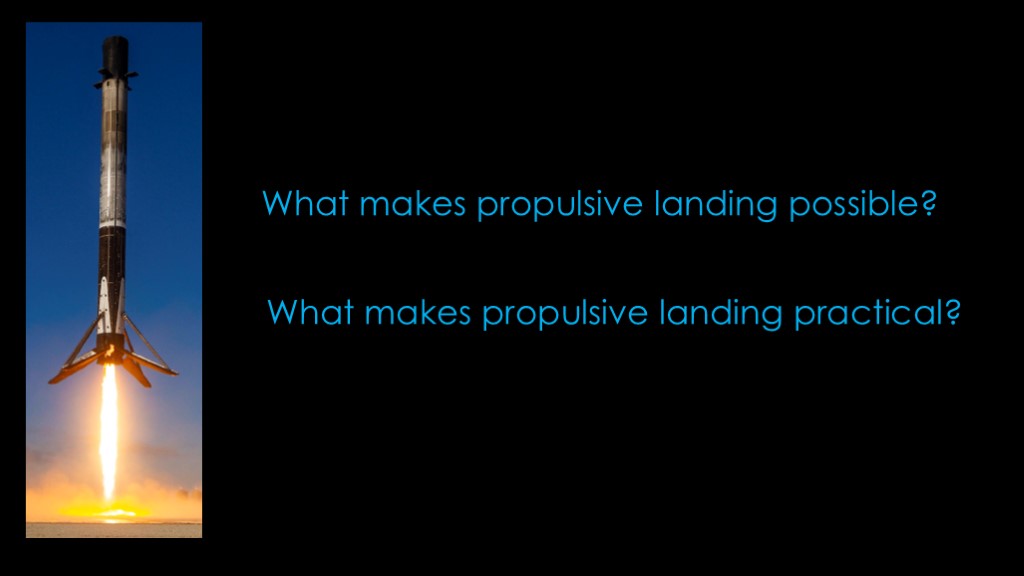
There are a number of factors to consider that control whether propulsive landing is possible and practical.
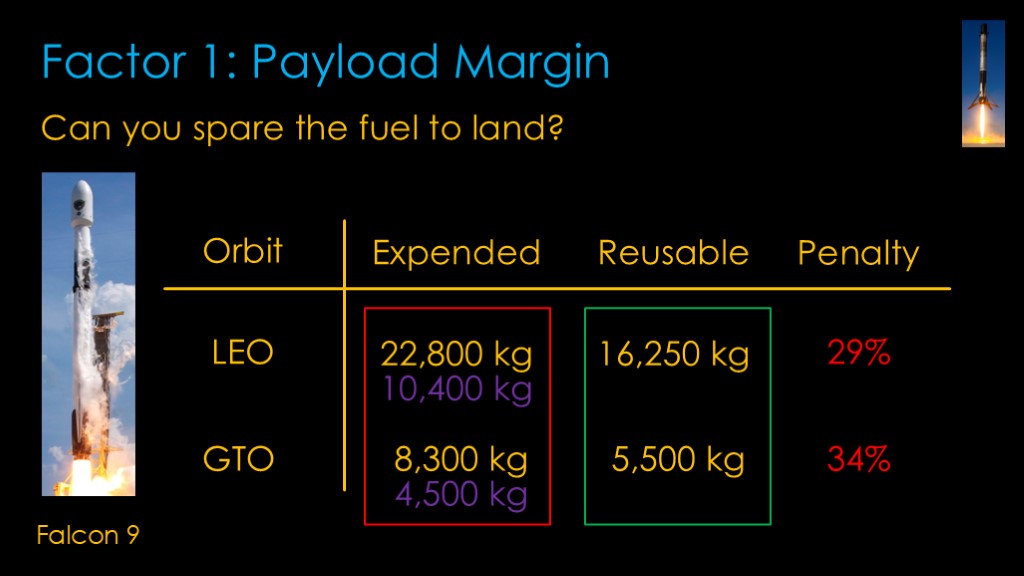
The first factor is the payload margin that you have. Can you spare the fuel to land?
Looking at the Falcon 9, we see that in expended mode, it can launch 22,800 kilograms to low earth orbit and 8300 kilograms to geosynchronous transfer orbit.
However, if the first stage is landed, that reduces the payloads to 16,250 kilograms to LEO and 5500 kilograms to GTO, for a payload penalty of 29% and 34%
Is that okay? It depends upon the market you are targeting.
If the majority of customers are here in reusable land, then you are in good shape; you can afford the performance penalty for most of the payloads that you launch.
If your market is over here in expendable land, then you have issues; you are not able to use your reusability.
For Falcon 9, their market is dominated by payloads that allow them to fly reusable, so they are in good shape.
This was *not* true for the first version of Falcon 9; its expendable payloads were less than the current Falcon 9's reusable payloads, and that meant it could not serve the target market in reusable mode.
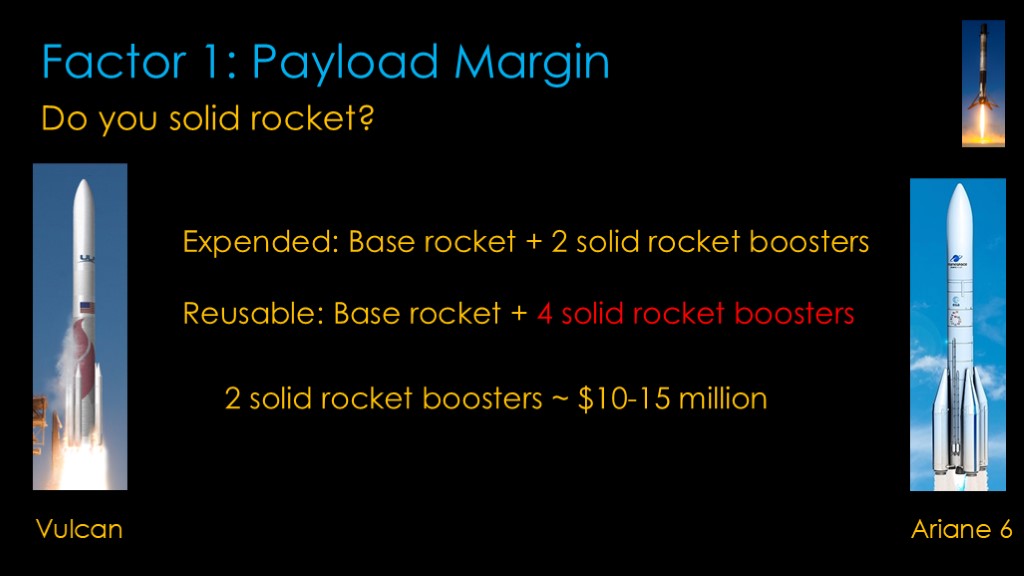
Another factor is whether you use solid rocket boosters on your launch vehicle, as the Vulcan and Ariane 6 will.
These vehicles tune their performance by adding just enough solid rocket boosters to support a specific payload mass. For example, they might use the base rocket plus 2 solid rocket boosters.
To land the first stage, they need more payload margin, which will mean the base rocket plus 4 solid rocket boosters.
The two additional solid rocket boosters might cost $10-15 million, which makes reuse much less attractive.
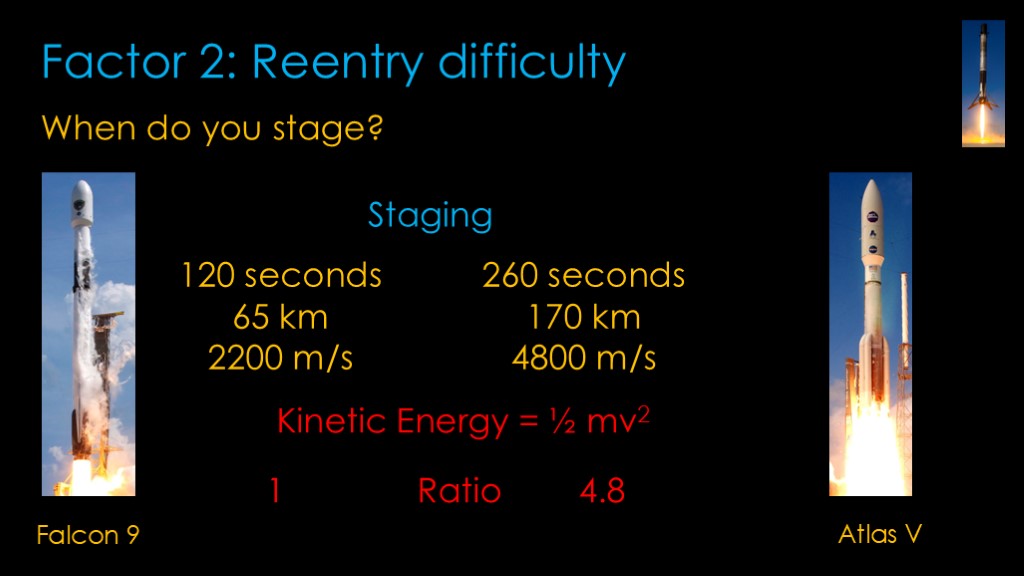
The second factor is the difficulty of reentry, and this is controlled by when the rocket stages.
Falcon 9 has a beefy second stage and stages quite early - 120 seconds into the flight, at an altitude of 65 kilometers and a speed of 2200 meters per second.
Atlas V from ULA - and the upcoming Vulcan launcher - have a wimpy upper stage, and do not stage until much later - at 260 seconds into the flight at an altitude of 170 km and a speed of 4800 meters per second.
If we remember that kinetic energy is ½ the mass times velocity squared, we can arbitrarily set the amount of energy Falcon 9 has to deal with to 1, and then calculate that the amount of energy Atlas V would have to deal with. The ratio is 4.8, and that means it would be much harder to protect an Atlas V first stage than a Falcon 9 first stage.
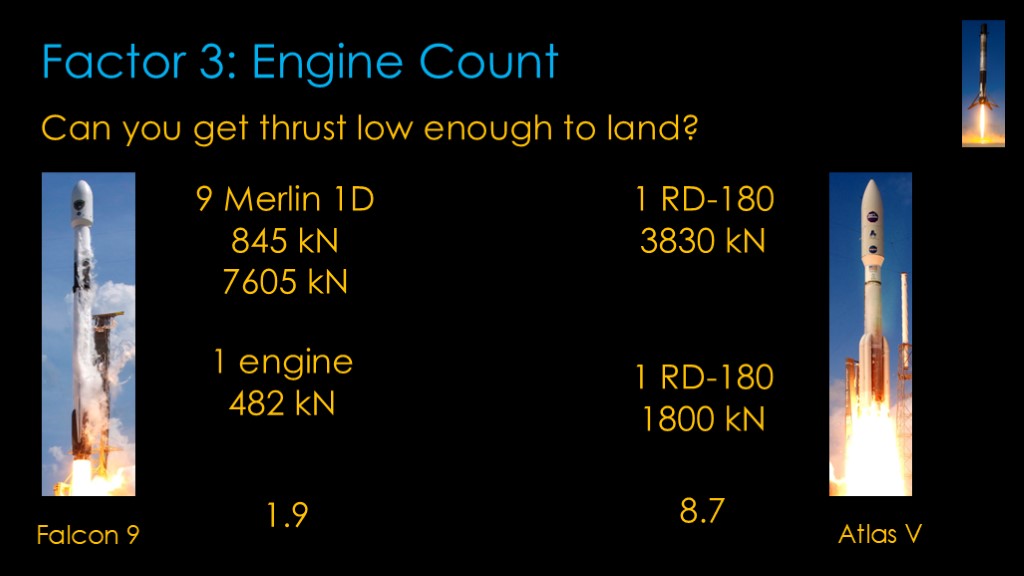
The third factor is the engine count, which determines if we can use the engines to land.
The Falcon 9 uses 9 Merlin 1D engines which produce a thrust of 845 kN each or 7605 kN total.
A single engine can be throttled down to about 482 kN, and with an empty first stage, that produces a thrust/weight ratio of about 1.9. That is low enough that it is relatively easy to control the velocity and land, but it does require the so-called "hoverslam" maneuver to do so.
The atlas v uses a single RD-180 engine that produces 3830 kn of thrust, and it can be throttled down to 1800 kN. With the atlas V first stage, that produces a thrust/weight ratio of 8.7, which makes propulsive landing unfeasible.
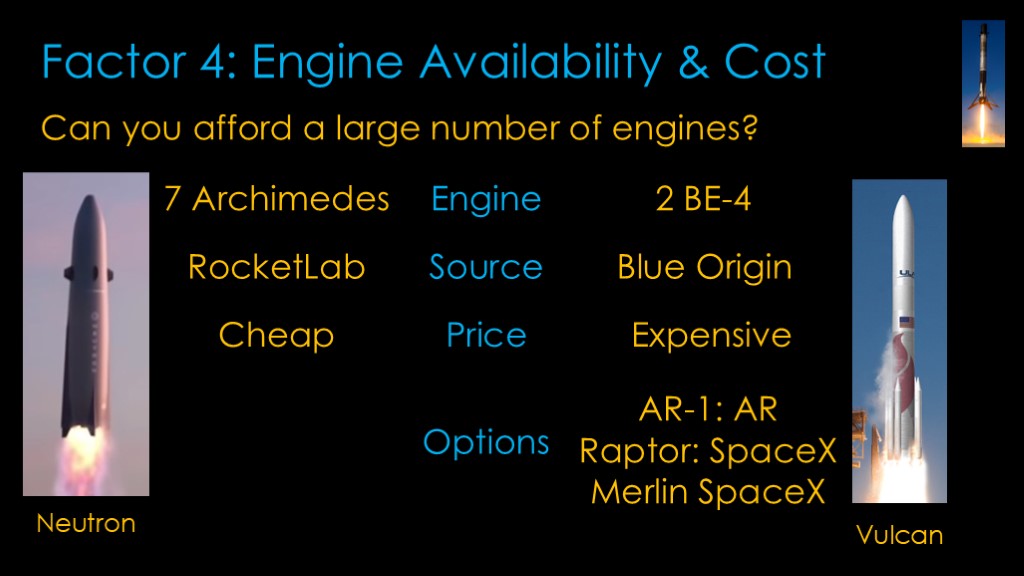
The fourth factor is the availability of engines and their cost.
For rocketlab's neutron, they will be using 7 Archimedes engines. They are building their own engines, and their goal is to create a cheap and simple engine - very similar to SpaceX's Merlin.
ULA, however, does not build their own engines so they are limited to commercially available engines. They have chosen the Blue Origin BE-4 for Vulcan, but the goal of blue origin is not to make those engines as cheap as possible or to make them a convenient size; their goal is to make as much profit as practical on an engine they are already making for New Glenn.
Their other issue is that they are inherently limited to engines that are available. They also considered the AR-1 from Aerojet Rocketdyne, and then could maybe consider the SpaceX Raptor or Merlin, but all of these have the same problem; that other company wants to make a profit on each engine.
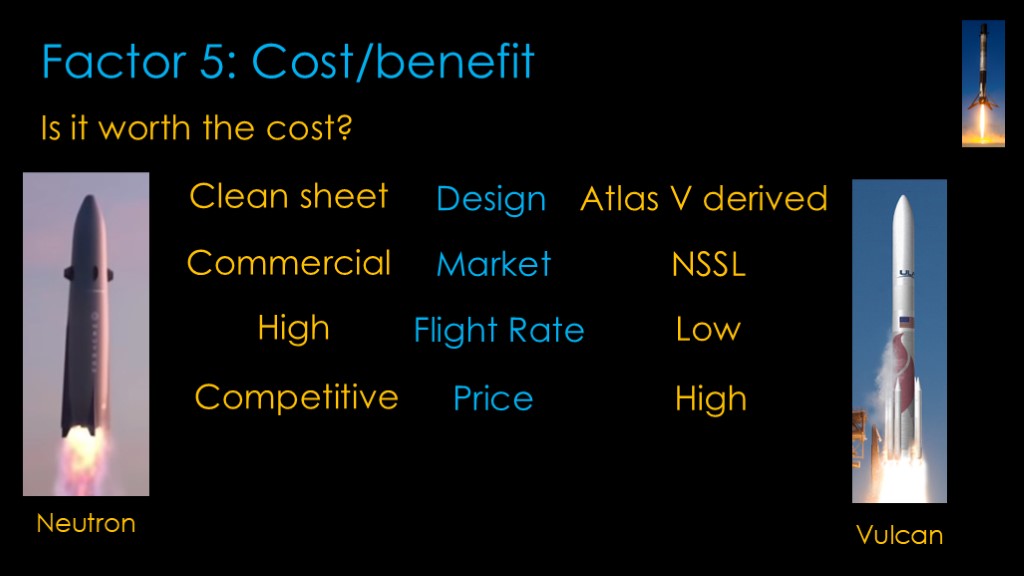
The last factor is the cost to benefit ratio. Is it worth the investment to develop reuse.
Neutron is a clean-sheet design, so they are doing all the engineering from scratch. Vulcan is an Atlas V derived launcher that uses the same second stage as Atlas V, and a redesign to support propulsive landing would be more costly.
Neutron is designed to compete in the commercial market and therefore needs to be an advanced design, but Vulcan is designed to launch National Security Space Launch payloads for the department of defense.
Neutron is designed to have a high flight rate, while Vulcan is designed to only launch a few times a year.
And finally, neutron needs to be competitive in price while the NSSL contracts value reliability and performance over price.
It simply may not be worth the money to develop reusability for Vulcan, though Amazon has recently ordered a lot of launches for their project Kuiper constellation and that will change the cost/benefit analysis for Vulcan.

Let's apply the factors to specific launchers.
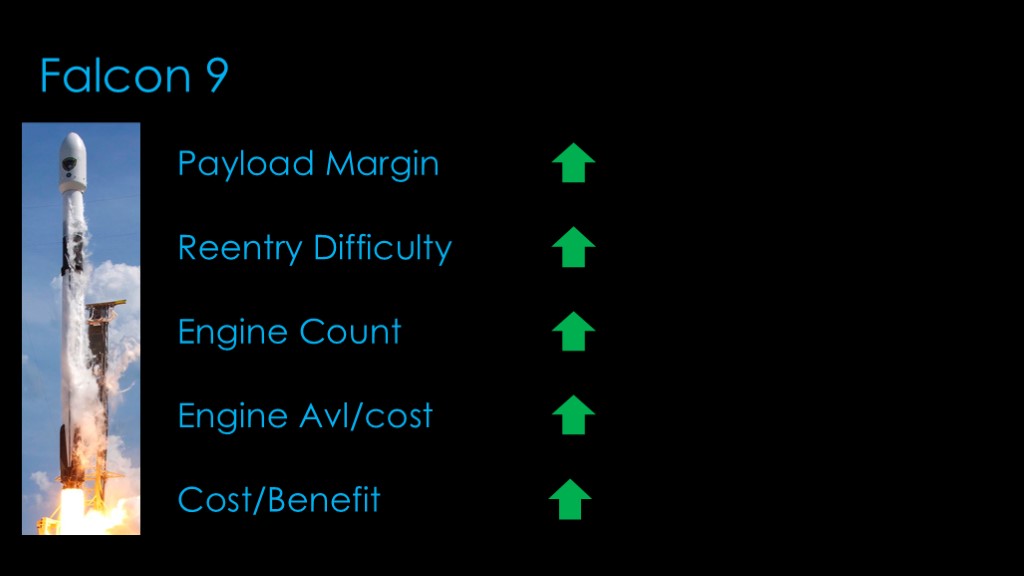
Falcon 9 has sufficient payload margin to launch for most of their customers and land the first stage, their reentry is relatively easy, and they have engines figured out. Their cost/benefit is clearly pretty good.
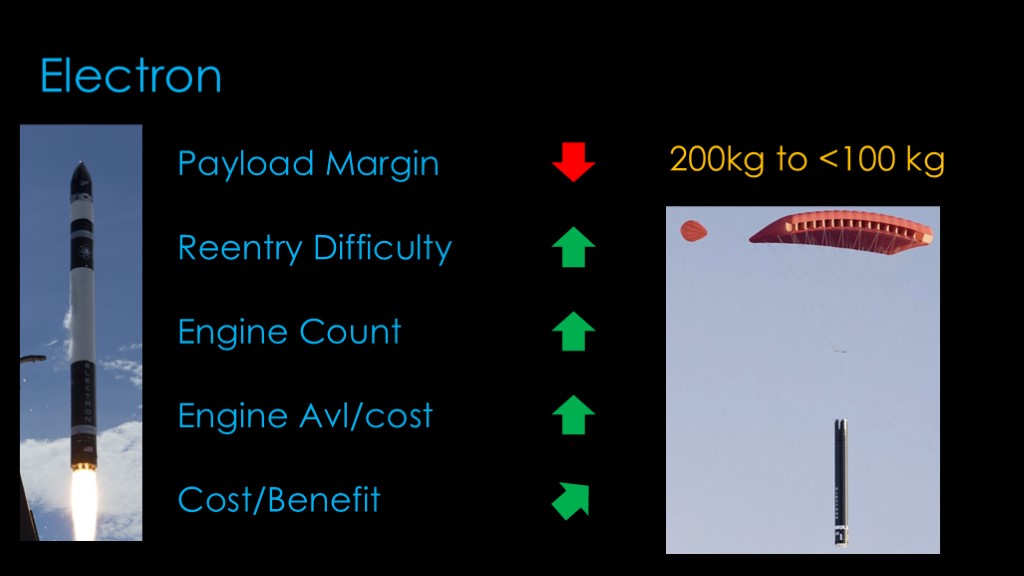
Electron is like Falcon 9 in most ways, but unfortunately they are only a 200 kg to orbit launcher, and reuse is harder for lighter rockets, so doing so would reduce their payload to under 100 kg. That alone makes propulsive landing non-viable for them.
They are, however, experimenting with catching their first stage with a helicopter for reuse.
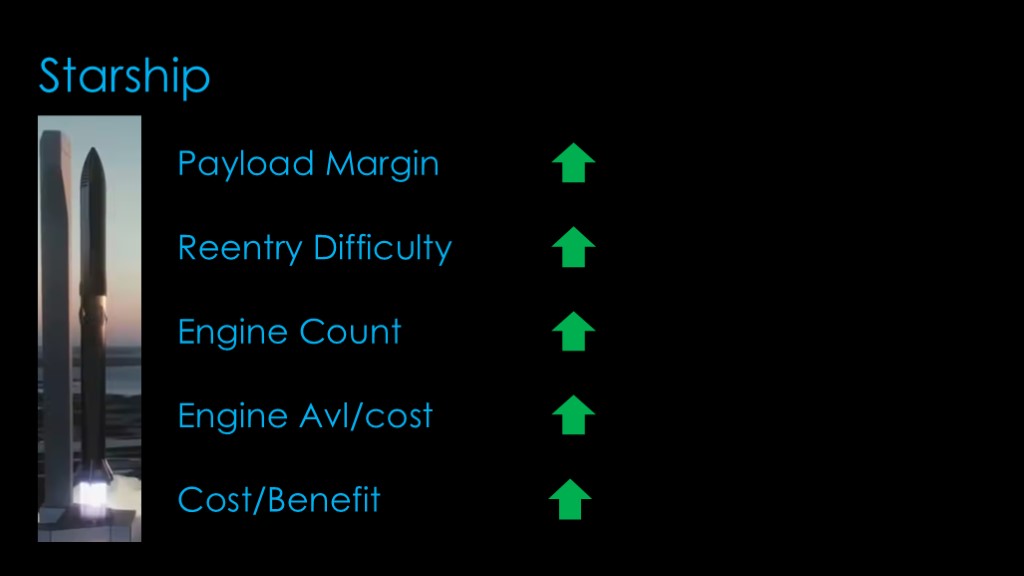
Starship is pretty obvious; it has all the characteristics to support both first stage and second stage reuse.
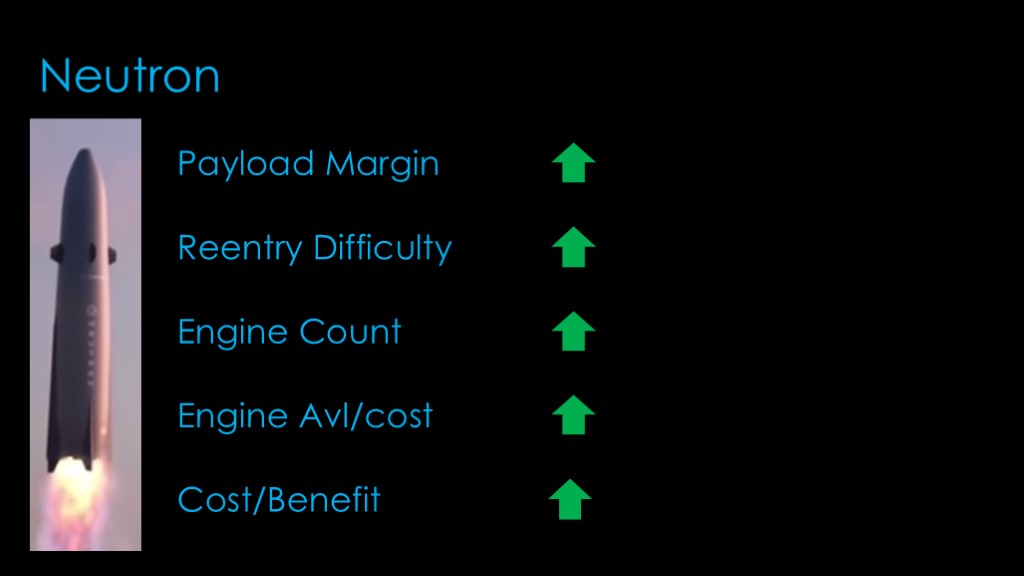
Neutron is like an evolved version of Falcon 9, and therefore has the same benefits.
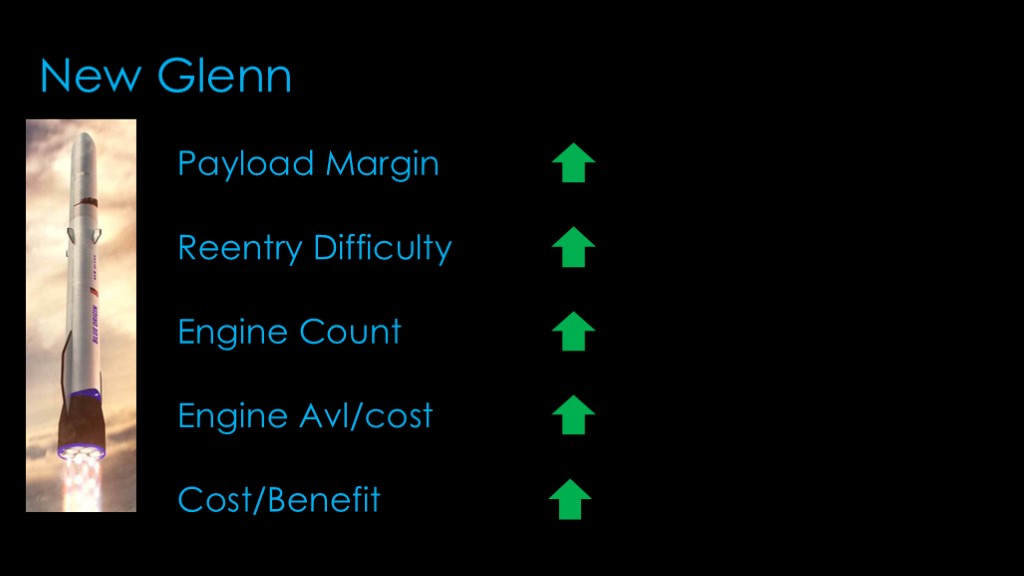
New Glenn looks like a nice reusable design based on the factors I listed, though it's not yet clear how reuse affects their payload margin and the markets they wish to serve.
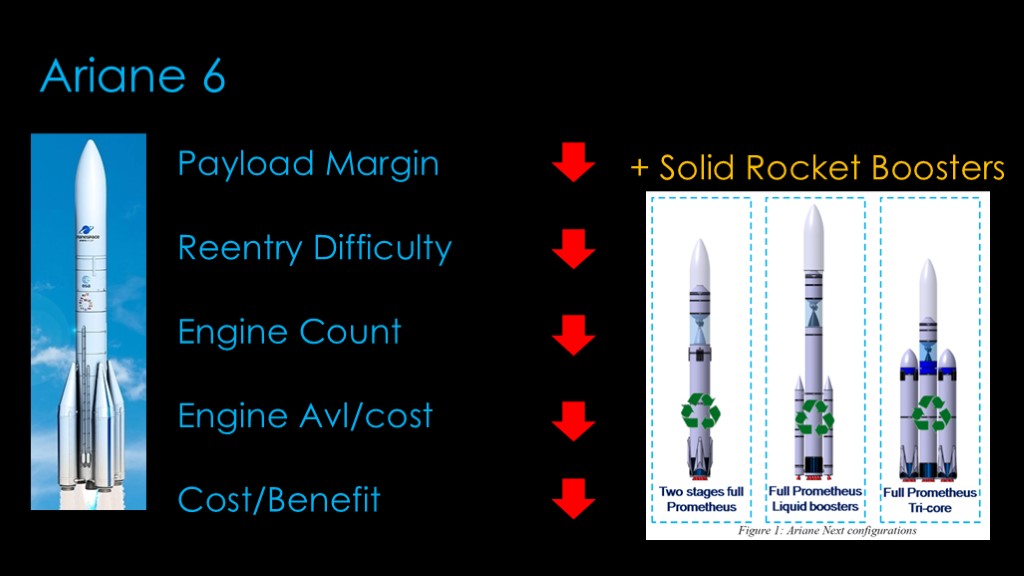
Ariane 6 does not score well. They don't have the payload margin and they use solid rocket boosters so the economics of reuse are less compelling, and they stage high and fast. They do have the possibility of new engines but they do not plan to do that in this launcher. It's not clear that they launch often enough to see a benefit from reuse.
They are, however, starting work on an "Ariane Next" launcher that looks much more like the existing reusable launchers, including either reusable liquid boosters or triple core like Falcon Heavy.
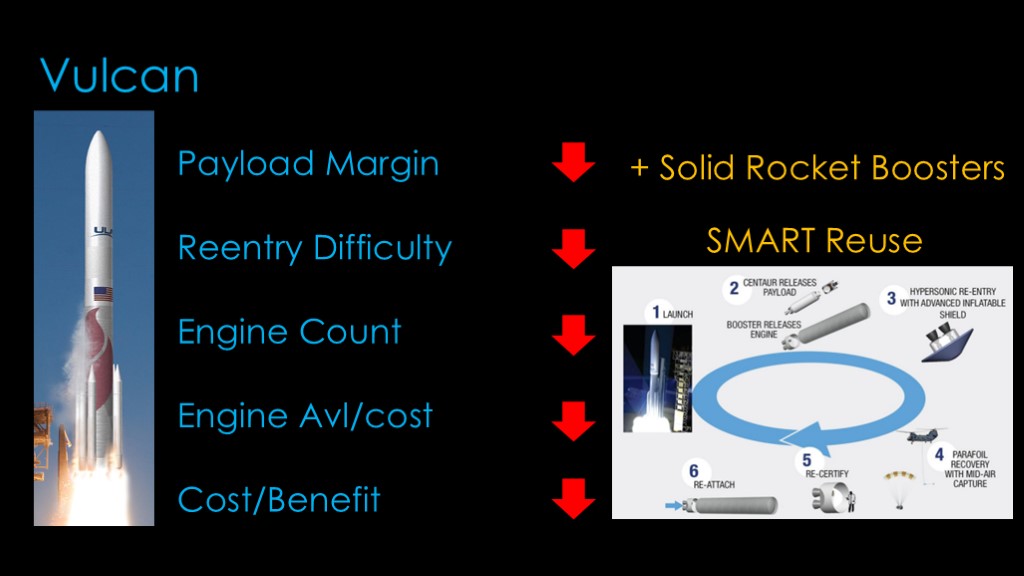
Finally, we come to Vulcan.
Like Ariane 6, it doesn't have the margin and depends on solid rocket boosters, and it stages high and fast. ULA doesn't build engines.
They have, however, talked about what they call "SMART Reuse", where the engine pod separates from the booster, deploys a reentry shield, and then is caught in mid air by a helicopter, using the same approach as Electron. That would save the expensive engines, and it would have a smaller payload impact than propulsive landing, but would have larger costs to refly.
SMART reuse hadn't been talked about in the last few years, presumably because the cost/benefit didn't make it worthwhile, but with the recent Project Kuiper contracts, ULA has said they will be developing it.
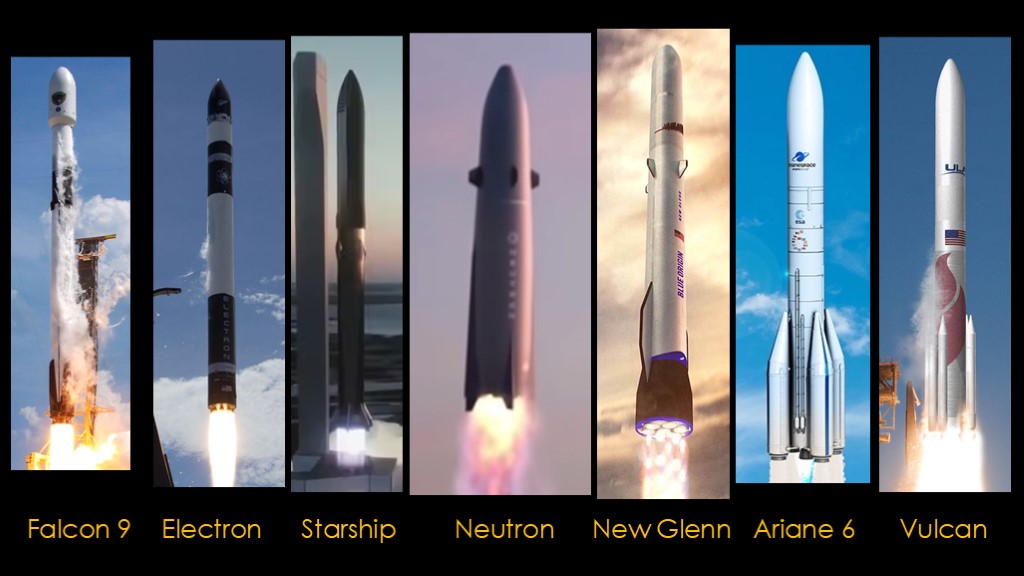
And that's the story on propulsive landing, and what is required to make it work.

If you enjoyed this video, please send me $1 for every Falcon 9 landing.